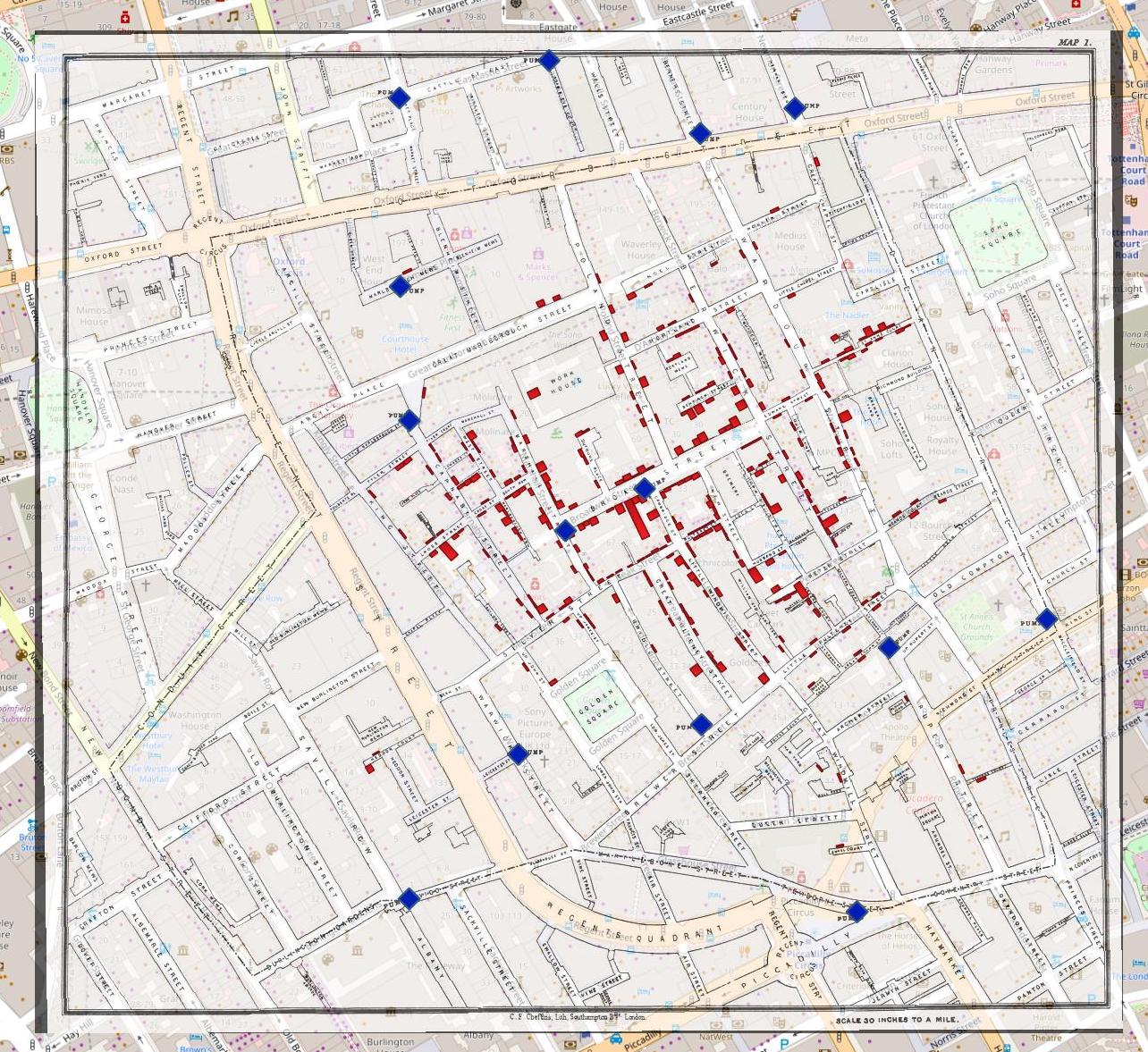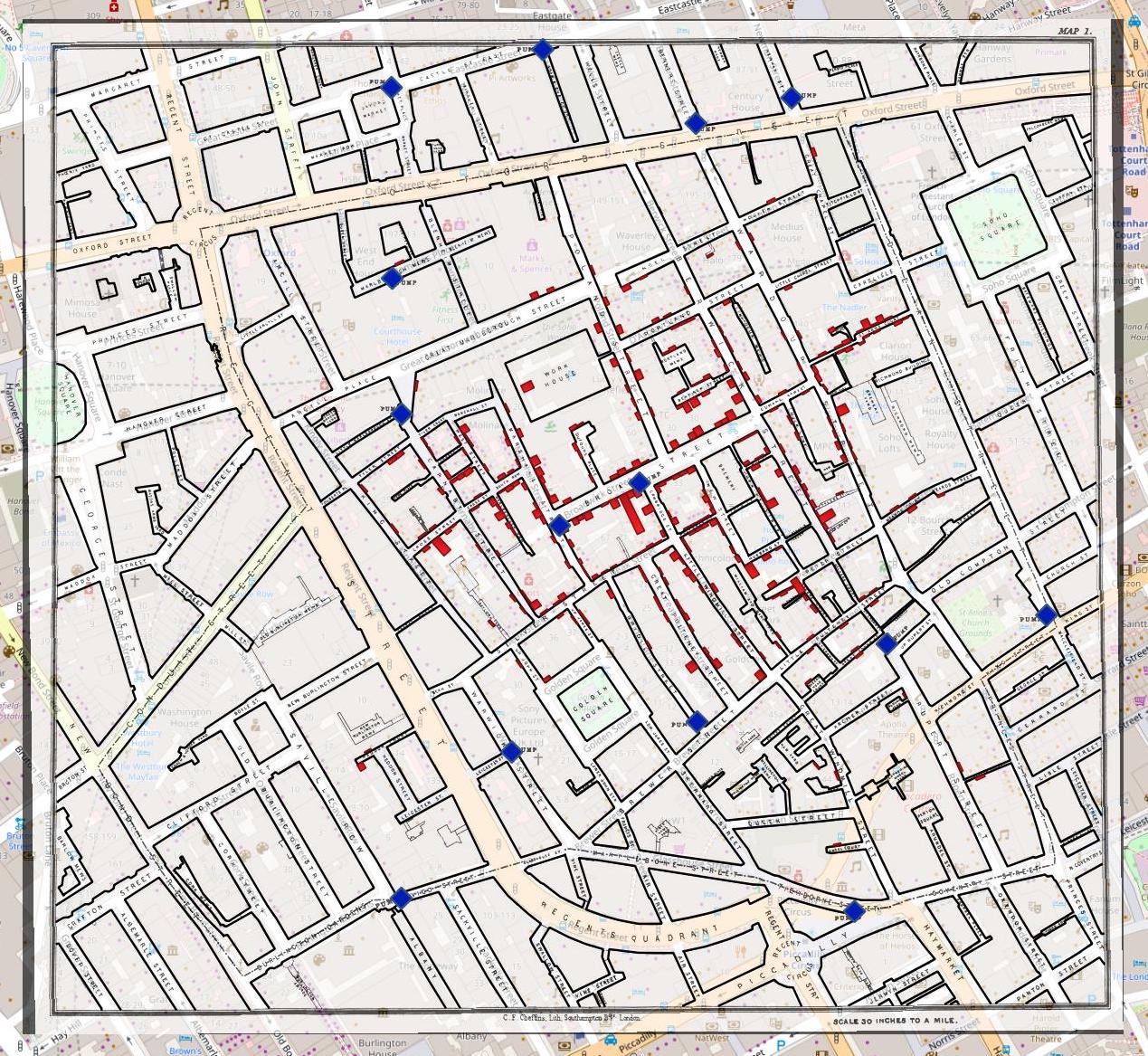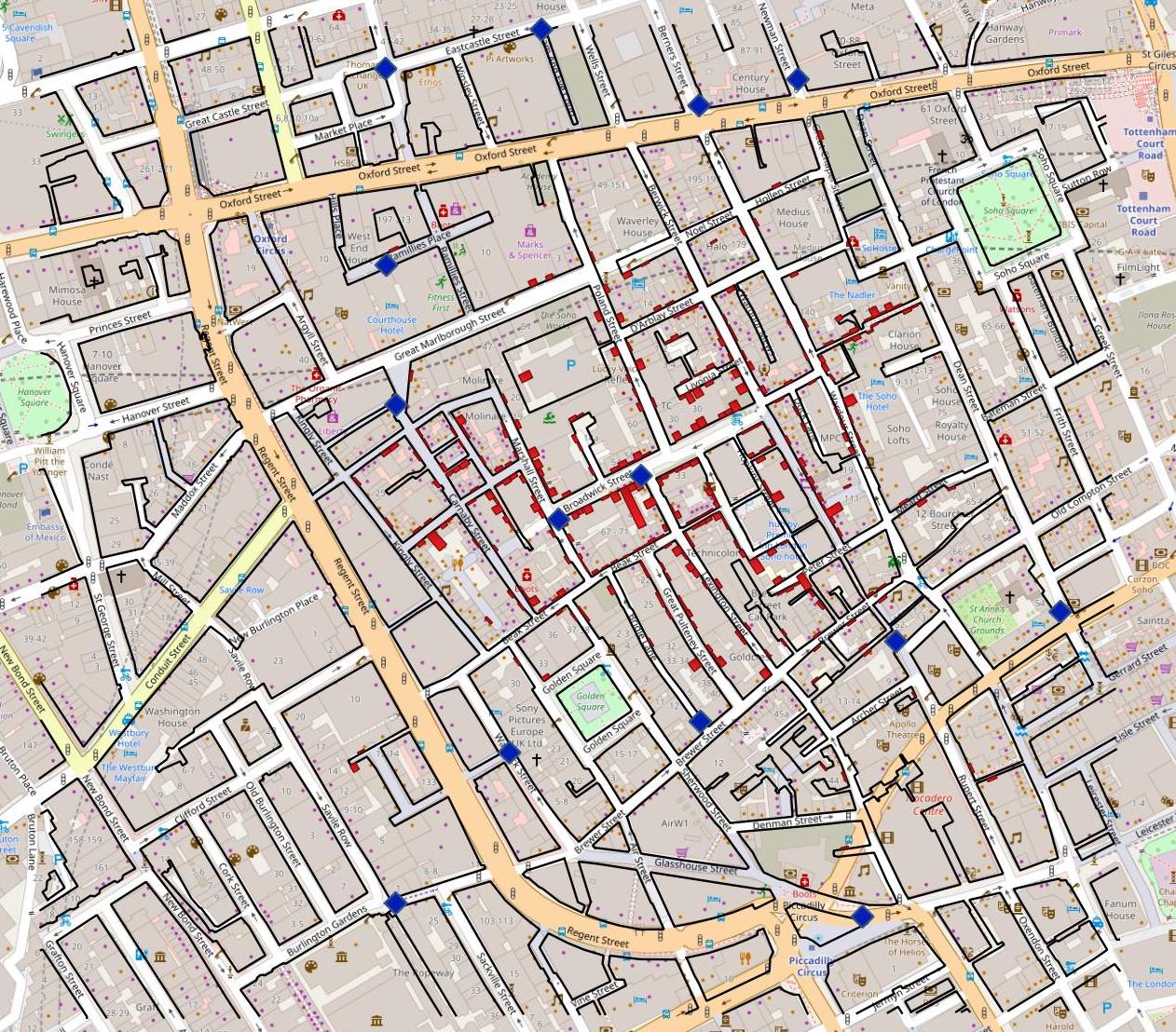When the Board of Health saw John Snow's map, and especially the few cases of delivered water which undermined the miasma theory, it was finally convinced of Snow’s theory. This led to one of the first public health interventions from epidemiology—taking the handle off the Broad Street pump.
Because of John Snow’s bravery—facing an incredibly lethal disease—he saved countless lives in Soho, and even more throughout the world through the creation of epidemiology. His method of tracing water to find the cause of a cholera outbreak was put to immediate use, solving another outbreak in London. In 1858 Parliament took action to clean up the Thames and in the second half of the 19th century England took action to create a modern sewer system. Snow’s scientific approach changed the course of history as cities became healthier places to live, and by the 1930s cholera had mostly been eradicated in industrial cities.
On a related note, it is also interesting to see how little England has physically changed in the 169 years since the Soho cholera outbreak. Seeing the centuries of common threads throughout a changing culture is why I love English history.

Here's Snow's map georeferenced on a modern map of London

This has the 1854 roads digitized

And here you can see how the digitized roads of 1854 compare with a modern map of London
Manually outlining the streets in Snow’s original map was beyond tedious—as you know if you’ve ever had to georeference and digitize a PDF. Thankfully, we’re working on making sure no one has to do that again. If you work with digitizing PDFs, let us work with you to automate the process here.
Map data from OpenStreetMap.
